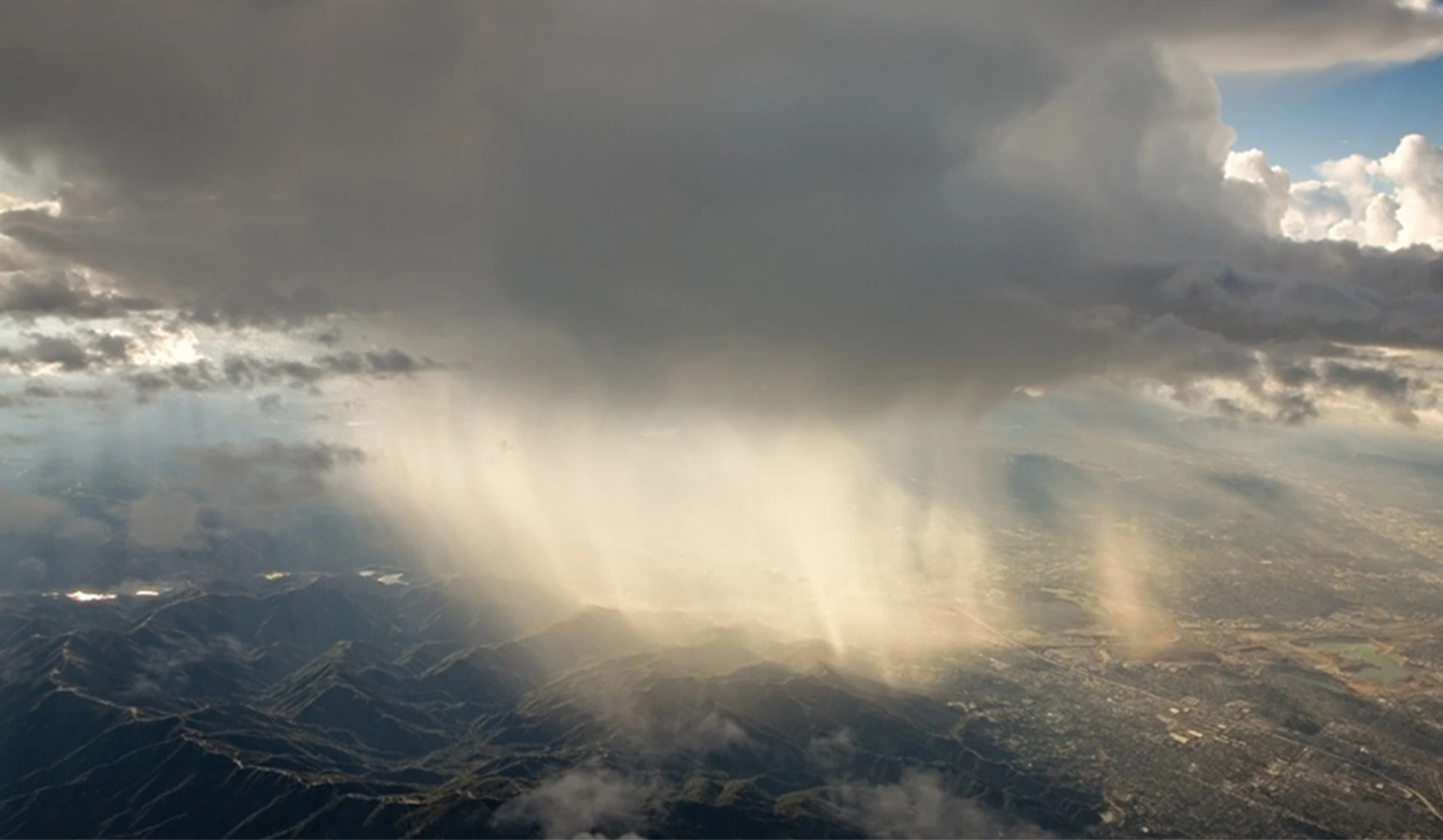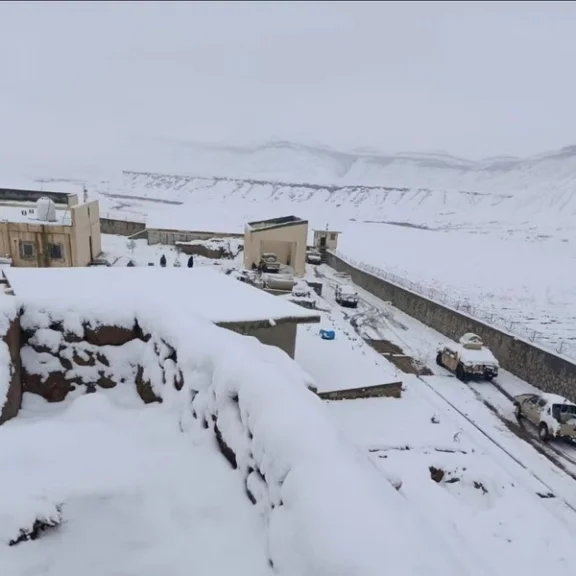Climate change is a significant global challenge, causing long-term shifts in Earth’s temperature and weather conditions. Human activities, such as burning fossil fuels and deforestation, have increased greenhouse gas concentrations, resulting in rising temperatures, shifting weather patterns, cloud bursts, melting glaciers, and ecological disturbances. This has also resulted in extreme weather events, such as catastrophic storms, prolonged rainfall, and flash floods. Research predicts a temperature shift of 1.3 to 4.9 degrees Celsius by 2090, marking the onset of the Anthropocene period, due to climate change and industrialization, which is causing ecosystem destruction.
South Asia, home to a quarter of the world’s population, is among the most vulnerable regions due to the rapid melting of glaciers in the Himalaya mountain ranges, causing erratic river flows, floods, and water shortages.
The Himalayas, often referred to as the third pole, which feed major river systems like the Indus, Ganges, and Brahmaputra, have lost 40% of their ice over several centuries.
Climate change poses significant environmental, socio-economic, and health threats to South Asia, leading to increased food insecurity, migration, poverty, and psychological impacts. Pakistan, a mountainous region, is most vulnerable to climate change, with over 33 million people affected.
Vulnerability of Jammu and Kashmir: A Case Study
The state of Jammu and Kashmir, renowned for being the most ecologically sustainable area globally, is experiencing severe effects of climate change. Already a conflicted region with a long history of socio-political unrest, the area’s Hindu Kush (HKH) range, once a natural barrier, has become a “line of devastation” due to the rapid loss of crucial water sources like glaciers, lakes, rivers, and waterfalls.
Climate experts have indicated that the Himalayas-Karakoram, often called the third pole, have shifted from serving as a protective barrier to becoming a zone of destruction, retreating at an alarming speed of 0.6 to 1.2 meters annually. A report from the Pakistan Meteorological Department (PMD) highlights that the substantial melting of glaciers in this region endangers downstream communities and local populations.
In IIOJK, the water level of Wular Lake, also called the “jewel in the crown,” and South Asia’s largest freshwater lake, is dropping. The frequent shrinking of the Wular and Jhelum rivers will not only lead to water shortages but also negatively affect the agriculture sector. These changes are not just irregularities but clear signs of broader climate change impacting the region’s water cycle and livelihoods. Melting glaciers in the Himalayan Range, especially in Kashmir and Ladakh, pose a significant threat to South Asia’s water supply. The Kolahoi Glacier’s nose has melted 22 meters in the last 20 years, reducing the flow of the River Jhelum.
Several districts in Azad Jammu and Kashmir, including Havelli, Muzaffarabad, Jhelum, and Neelum Valley, have all undergone severe climate change and have experienced cloud bursts, resulting in significant economic and human losses, particularly in the Neelum Valley, which is more vulnerable to climate change manifestations such as cloud bursts, erratic precipitation patterns, soil erosion, and glacier retreat. The valley is home to 224 glaciers holding 4.9 cubic km of ice. However, these glaciers are melting at an alarming rate.
Five cloud bursts have decimated Neelum Valley over the previous five years, affecting the lives of hundreds of people and creating massive economic losses. The rising temperatures due to deforestation and tourism surge atmospheric moisture build-up, leading to severe rainfall.
In August 2025, sudden cloudbursts caused severe flooding in the AJK region, causing major destruction and deaths. The intense climate vulnerability was evident in areas like Neelum Valley, Bagh, Jhelum Valley, and Muzaffarabad. The bursting flood waves demolished numerous homes and mosques, wreaked damage on farming areas, washing away valuable topsoil and ruining standing crops that residents relied on for a living.
The Hidden Toll: Climate Change’s Impact on Mental Health
Climate change has not only impacted humans economically but has also taken a toll on their mental health. Individuals who have witnessed extreme events such as heat waves and cloudbursts are experiencing psychological distress. Climate-related disasters like floods, hurricanes, and bushfires can lead to stress-related psychiatric disorders, including posttraumatic stress disorder (PTSD). Symptoms include flashbacks, increased arousal, and avoidance of memory cues. PTSD can lead to impaired quality of life and significant distress.
There have been several cases reported in AJK where people who have witnessed disasters are now suffering from various mental health issues. The areas near the LOC where people have already been traumatized by decades of cross-border firing are now facing climate-induced trauma as well.
In the affected areas, several causes of mental health illnesses exist. The damages caused by disasters such as floods, cloudbursts, and strong winds, along with economic losses, tensions faced by farmers over tropical crops, and displacement after disasters, all contribute to stress. The struggle to rebuild one’s lifestyle contributes to creating fear and disappointment, ultimately leading to mental health issues. This constant instability has led to a rise in depression and chronic stress. Many people are scared of rain and even strong winds. Their condition worsens during the monsoon season.
It is a fact that climate change has impacted all socio-economic aspects of life, particularly mental health, but unfortunately, the local community is not even aware of the impact of climate change on mental health. Around the world, countries are developing mechanisms to raise awareness on this issue and how to address the situation. However, in AJK, this awareness remains largely absent.
The most necessary step is to educate people about the illnesses they are suffering from, how to manage the situation, and how they can help educate others. The government of AJK should organize a team to guide people in affected areas, where residents are struggling with undiagnosed mental health issues. These teams should include psychiatrists who can counsel and treat people, as well as raise awareness about mental health in the context of climate-related disasters. To mitigate the rising mental health impacts, the government and people have to work on a good health and well-being policy, including mental health and psychosocial support (MHPSS) community resilience.
Despite the existence of the AJK climate change policy, which recommended eco-friendly tourism and other climate-related aspects, no significant implementation has taken place in the past years. The government must take urgent and serious action to regulate activities in ecologically vulnerable areas to safeguard the ecological system of the state and mitigate both environmental and mental health consequences.
The views expressed in this article are the author’s own. They do not necessarily reflect the editorial policy of the South Asia Times.







